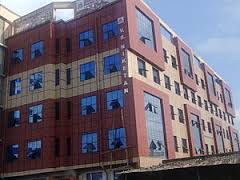|
Our volunteer in Patan, Yubraj Ghimire, shares his perspective on the Nepali school system and how NCEF accomplishes much within this framework.

Yubraj Ghimire
Schools
are the places where children learn everything. Like many other
nations, Nepal has two types of schools: those which are privately owned
and those which are government-run.
Government schools
are facilitated under the Ministry of Education with the goal of
providing quality education to citizens. The staff, infrastructure, and
other resources are provided by the government free of cost to the
school and its attendees. However, due to many changing factors, some
students have been charged small fees to attend.
Due to the widespread poverty in Nepal, many children
cannot attend school even when it’s free due to the costs of uniforms,
school supplies, and the opportunity cost of a family losing the
potential income their child could earn; instead of going to school,
many children work on farms, scavenge for firewood in the forest, or
breed livestock, all from a young age.
Private schools
are run by a group or individual as an alternative to these government
schools, where an emphasis is placed on quality education in a
disciplined environment. They may boast amenities like outdoor sports
facilities, air conditioning, and highly trained teachers. These schools
are often very expensive so many families simply cannot afford them.
Surprisingly,
around 70% of Nepal’s student body can be found in private schools. The
reason for this being that private schools are available all across the
nation, even in small townships and rural areas so children don’t have
to worry about location as an issue. Additionally, while government
schools might have classes of 45-60 students, private schools average
25-30. Government schools are short-staffed and require one teacher to
wear many hats, often in less attractive facilities, whereas private
schools often offer superior staff and facilities.

Private School in Kathmandu

Government School Outside Kathmandu
Though both schools have their pros and cons, private schools tend to have a much higher passing rate. Thanks to increased awareness in parents--even those in rural areas--NGOs (non-governmental organizations) and international NGOs have been able to bring many poor children into both government and private schools, depending on the situation, location and cost. These organizations help economically, but also by conducting awareness campaigns. In this way, groups like NCEF make their mission known to parents and children to ensure that children all across Nepal may be granted access to thorough and competitive education opportunities.
Yubraj Ghimire - Patan Area Volunteer since May 2011
|
